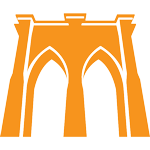BMT Podcast Audio Setup Guide
Podcast Audio Guide for the BMT Podcast
Welcome to the BMT Podcast Audio Guide!
In this guide, we'll walk you through various audio setup options to help you achieve the best possible sound quality for your podcast appearance.
While we will be using Zoom for the video conference, the sound quality over Zoom is not ideal for professional podcast recordings. To ensure the best audio quality, as well as to avoid glitches and cutouts inherent in internet conferencing, we'll need you to record your audio locally.
We'll start with basic recording options and then discuss several upgrade levels to meet your needs and budget.
But before that, we'll go over what won't work when producing a good quality podcast.
What Won't Work
There are some audio options that are not suitable for professional podcast recordings. Here are a few examples of what to avoid:
Webcams: While webcams often come with built-in microphones, the audio quality is generally poor and not suitable for podcasting.
Bluetooth earbuds and headphones: Wireless audio devices like Bluetooth earbuds and headphones may have built-in microphones, but they often suffer from audio compression and latency issues that negatively impact sound quality.
Always use wired headphones when recording your podcast to prevent audio bleed and ensure the best sound quality.
Basic Recording Option: Using Your Phone
If you're just getting started and need a simple solution, using your smartphone as a recording device is an option.
Most smartphones have built-in microphones that can capture decent audio quality. However, to ensure the best sound, make sure you're in a quiet environment and hold the phone close to your mouth while speaking.
Upgrade Level 1: Reasonable Quality Headset (Under $50)
A budget-friendly upgrade from using your phone is to invest in a reasonable quality headset with a built-in microphone. One option we recommend is the Logitech H390 USB Headset. This headset offers clear audio and noise-canceling features to minimize background noise.
Upgrade Level 2: Decent USB Microphone with Headphone Jack
For an even better audio experience, consider purchasing a dedicated USB microphone with a headphone jack. Some options include the Samson Q2U, Samson Q9U, and Audio-Technica ATR2100x. Our top recommendation is the Shure MV7, which offers exceptional sound quality and versatility.
Upgrade Level 3: "Overkill" Option – Audio Interface and High-End Mic
For those who want the best possible audio quality, consider investing in a separate audio interface and high-end microphone. A popular audio interface option is the Focusrite Scarlett, which can be paired with a high-quality microphone like the Earthworks Ethos [make a link]. This setup provides professional-level audio quality and greater control over your sound.
Room Treatment and Outside Noise
Regardless of your audio equipment, it's important to minimize background noise and improve the acoustics in your recording environment. Here are some tips to help you achieve a clean and clear sound:
Choose a quiet location: Pick a space in your home that's away from street noise, household appliances, and other potential sources of background noise.
Close doors and windows: Shutting doors and windows will help reduce outside noise and create a more controlled recording environment.
Use soft furnishings: Adding rugs, curtains, or other soft furnishings to your space can help absorb sound and reduce echo.
Consider DIY soundproofing: If you're serious about podcasting, you might want to invest in some basic soundproofing materials like acoustic foam panels or bass traps to further improve your room's acoustics.
By following this guide and choosing the right audio setup for your needs, you'll be well on your way to achieving great sound quality for your appearance on the BMT Podcast. Happy recording!
